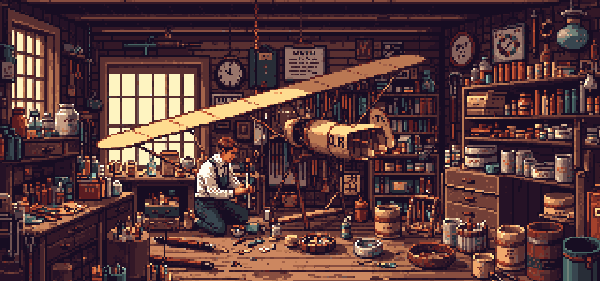Form Follows Function? Or Does It? A Creative Perspective on Thinking Outside the Box
There’s an old saying in design: Form follows function. It’s the mantra that gets thrown around in every design meeting, every brainstorming session, and every pitch where practicality is the star of the show. It’s logical, sensible, and efficient. And it makes sense—most of the time. But is it always the best approach? Does prioritizing function over form stifle creativity?
I once lost a gig because I dared to question this sacred dogma. My client, firm in his belief, told me, “Form follows function. Form is what sells the function.” He viewed design as a one-way street: function drives the car, and form sits in the back, quietly obeying.Best Case of Form follows Function
“Actually,” I said, “sometimes form leads the way. Sometimes form inspires function. Innovation doesn’t always start with a checklist of needs.”
It was not a productive conversation. Let’s just say we didn’t end up working together. But that moment stuck with me because it highlighted a deeper truth: this debate isn’t as black and white as it seems.
The Case for Function Leading Form
When you look at the world of practical design, the idea of “form follows function” makes sense. Products need to work. They need to solve problems, accomplish tasks, and meet the needs of the people using them.
Take flying, for example. For centuries, humans dreamed of soaring through the skies. The function—getting off the ground and staying there—was clear. But the form was a mystery. Early inventors looked to nature for answers, designing contraptions that mimicked birds. These experiments, while beautiful and creative, mostly failed.
It wasn’t until the Wright brothers stepped in—experimenting with fixed wings, propulsion, and aerodynamics—that the form caught up with the function.
This is a classic case of function guiding form. The goal was clear, and through trial, error, and problem-solving, they found the right form to achieve it. In a world where things need to get done, function is often the best starting point.
 Best Case of Form follows Function
Best Case of Form follows Function
The Magic of Form Leading Function
But sometimes, innovation happens when you flip the script—when form takes the lead and function follows. This is where true out-of-the-box thinking happens.
Think of the wheel. Do you really think its inventor started with a functional goal, saying, “What we need is a circular object to optimize transportation efficiency”? Of course not! The wheel wasn’t born from problem-solving or practicality.
It was probably the result of someone playing around with sticks, stones, or round objects. Maybe they noticed that a round stone rolled more easily than a jagged one. The function of transportation didn’t come first. It emerged as a happy accident of exploring form.
The same could be said of the iPhone. When Apple created it, the function—calling, texting, browsing, and using apps—already existed. BlackBerry and Palm had been doing it for years. But their designs were clunky and uninspired.
Apple redefined the form, creating a sleek touchscreen device that fundamentally changed how people interacted with technology. Swiping, tapping, and pinching became second nature because the form encouraged a new kind of functionality. Apple didn’t just optimize; they reimagined what a smartphone could be.
In both cases, it was form—not function—that sparked innovation.
Why Form Leading Function Matters in Today’s World
In today’s hyper-functional, hyper-optimized world, it’s easy to start with function. We have the tools, knowledge, and technology to solve nearly any problem. But when we let form take the lead—when we play, experiment, and explore—we open the door to unexpected discoveries.
Take biomimicry, for example. Engineers have designed faster trains by mimicking the shape of a kingfisher’s beak, which allows for quieter and more efficient movement. Here, nature’s form came first, and engineers applied it to solve a functional challenge. It’s a perfect example of how thinking outside the box—letting form inspire function—can lead to breakthroughs.
A Two-Way Street
The truth is, form and function aren’t in competition. They’re partners. Sometimes one leads, and sometimes the other does. The best designs, the most innovative ideas, come from letting form and function dance together—challenging and inspiring each other along the way.
To the client I lost, I’ll say this: no hard feelings. But next time, remember that creativity isn’t about rigid rules. It’s about exploration and experimentation. The person who invented the wheel wasn’t optimizing for efficiency; they were just playing around—and look where that got us.
Closing Thoughts
So here’s my advice: whether you start with function or let form take the lead, don’t be afraid to think outside the box. Sometimes, the best ideas come when you loosen the reins and let inspiration roll.

